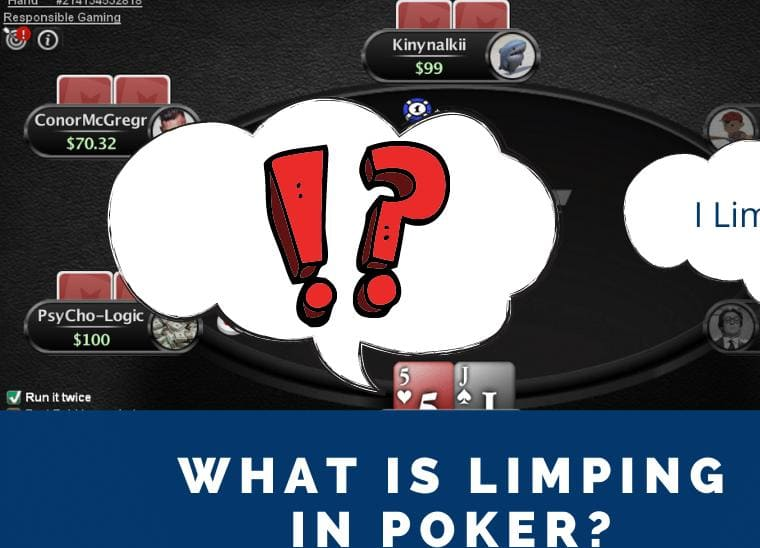A lot of players have questions about what is a limp in poker. This article will provide an overview of the types of limps, as well as some common mistakes to avoid. Then, we’ll talk about some of the top strategies to use when you’re playing against a limper.

Open limp
Open limping is a common strategy among recreational players. This type of play has been criticized by many people in the poker community. While open limping does not necessarily have negative consequences, it is not a winning strategy.
The term “open limp” means that the player does not raise the pot, but instead calls the big blind and makes a minimum bet. In the poker world, the optimum strategy is to raise the pot and make a decent hand. However, this is difficult to accomplish.
Many players think that the best way to win is to muck their weak hand. It may be true in some situations, but in most cases, this strategy does not work.
For example, playing a weak pocket pair against an aggressive range is a losing proposition. Instead, you should consider the best hand that you can call with. A solid broadway or AQ offsuit can be very profitable in a situation like this.
Limp shove
The limp shove in poker is a good strategy to use when you have an aggressive opponent. It’s a great way to protect your blinds and show strength in your game. However, it’s not a strategy you can do too often.
You should only do a limp shove in a situation where you know you’re likely to get called. Also, do not do it with pocket tens or JJ. A better tactic is to call a raise or re-raise.
When you’re unsure whether or not to shove, you can try calling an opponent’s raise. This allows you to learn more about their hand. Alternatively, you could re-raise them and force them to fold. In this case, you’ll win more money.
Generally, you should not do a limp shove if your stack is smaller than 1010. However, it’s a good idea to shove all-in from time to time if you have a decent hand.
The best times to do a limp shove are in late stage. When there are two or three players limping in the pot, your chances of getting it through are better.
Against limpers
When playing in tournaments or cash games against limpers, you need to know the right strategy. Fortunately, there are several options that can help you win against weak players. But you should also be aware of the risks.
The first strategy is to play tighter. You can bet a smaller percentage of the pot to prevent folding weak hands. This will force the limper to make a more difficult decision. However, you can take this too far and get trapped.
Depending on the level of skill of your opponent, it might be best to play looser. Especially if the player is in the early position. Often, this player will limp-fold.
If you have a pair, it is best to avoid multi-way pots. Having too many players in the pot will reduce your equity.
The second strategy is to try to isolate the limper. This strategy will work well against a wide range of hands. It is important to understand that most open-limping players are passive. They don’t have a good grasp of the pot odds.
Common mistakes made by limpers
When a player limps into the pot, he is trying to get a free shot at the flop, or at least a chance to take the pot. It is an effective strategy in certain situations, but in other situations, it is a poor choice.
There are several common mistakes made by limpers in poker. These errors can make the difference between winning a hand or losing it. Before you play against a limper, take the time to learn about their style.
Most players who limp are weak, so they are going to be prone to making bad mistakes. Typically, they will limp when they have a weak hand. You can use this fact to your advantage. If you have a strong hand, you can raise the pot and force them to call. This will allow you to see a flop, which they usually don’t do.
Sometimes, an inexperienced player may limp simply because he is saving money. However, this can lead to more losses over the long run.